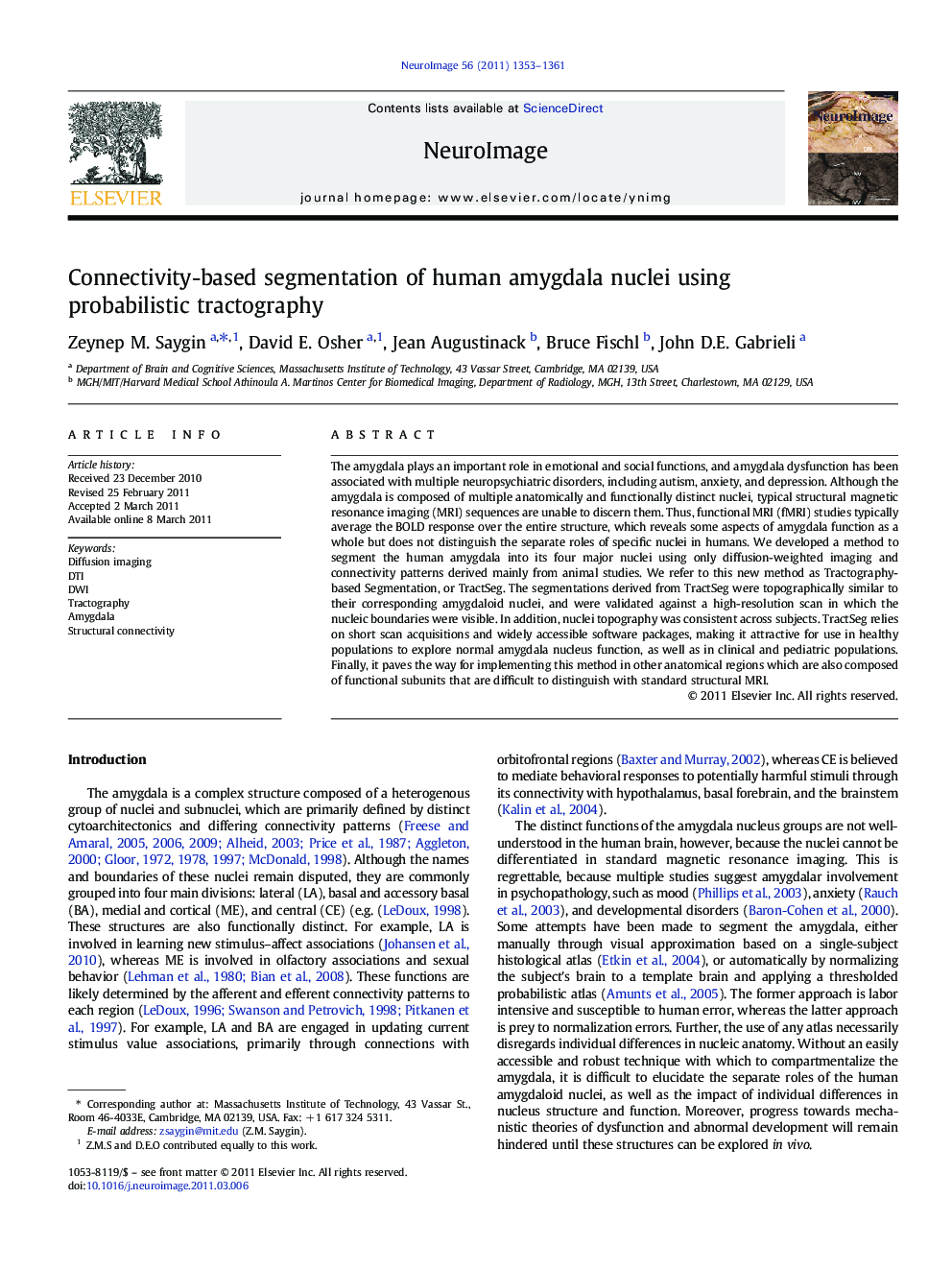| کد مقاله | کد نشریه | سال انتشار | مقاله انگلیسی | نسخه تمام متن |
|---|---|---|---|---|
| 6035940 | 1188772 | 2011 | 9 صفحه PDF | دانلود رایگان |

The amygdala plays an important role in emotional and social functions, and amygdala dysfunction has been associated with multiple neuropsychiatric disorders, including autism, anxiety, and depression. Although the amygdala is composed of multiple anatomically and functionally distinct nuclei, typical structural magnetic resonance imaging (MRI) sequences are unable to discern them. Thus, functional MRI (fMRI) studies typically average the BOLD response over the entire structure, which reveals some aspects of amygdala function as a whole but does not distinguish the separate roles of specific nuclei in humans. We developed a method to segment the human amygdala into its four major nuclei using only diffusion-weighted imaging and connectivity patterns derived mainly from animal studies. We refer to this new method as Tractography-based Segmentation, or TractSeg. The segmentations derived from TractSeg were topographically similar to their corresponding amygdaloid nuclei, and were validated against a high-resolution scan in which the nucleic boundaries were visible. In addition, nuclei topography was consistent across subjects. TractSeg relies on short scan acquisitions and widely accessible software packages, making it attractive for use in healthy populations to explore normal amygdala nucleus function, as well as in clinical and pediatric populations. Finally, it paves the way for implementing this method in other anatomical regions which are also composed of functional subunits that are difficult to distinguish with standard structural MRI.
Research highlightsâºAmygdaloid nuclei have different functions and distinct connectivity patterns âºBut, they are indistinguishable in vivo and so their function in humans is unclear âºWe created Boolean equations to reflect the 4 nuclei's unique connectivity profiles âºWhen applied to DWI, they form regions that map well to known nucleus locations âºThis is replicated across 35 individuals, and validated by high-resolution imaging
Journal: NeuroImage - Volume 56, Issue 3, 1 June 2011, Pages 1353-1361